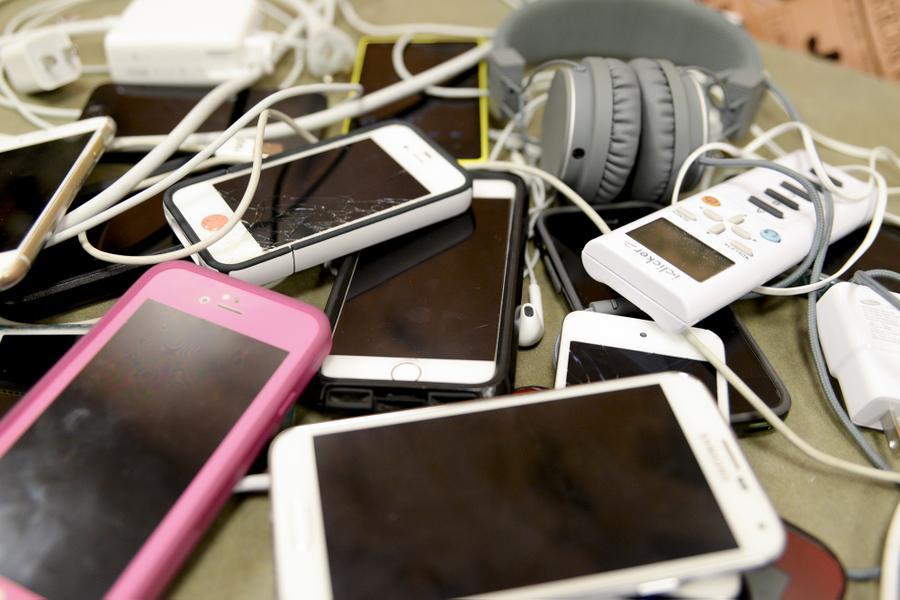
In 2009, Apple released the iPhone 3GS. That same year, about 438 million new electronic products were sold — twice the sales made in 1997. The sale of mobile devices alone grew nine times during that period, according to an Environmental Protection Agency report.
The EPA report stated that 2.37 million tons of electronics were discarded in 2009. Of these electronics, only 25 percent were actually recycled.
But there is an alternative way to dispose of used electronic products. Sustain Mizzou is hosting an e-waste drive during Sustainability Week to collect these materials to be recycled. The drive is scheduled to take place April 8-10 on the north side of the MU Student Center.
Last year, Sustain Mizzou collected between 1,500 and 2,000 pounds of e-waste.
The drive will accept “anything with a cord or battery,” said Stan Fredrick, owner of [Mid-Mo Recycling](http://www.midmorecycling.com/). Fredrick’s recycling company is partnering up with Sustain Mizzou for this year’s drive. He said the only items that will not be accepted at the drive are CRT (cathode-ray tube) TVs.
Everything, from the plastic casings to the glass screens, the copper wire to the gold plating on circuit boards and even the screws are recycled, Fredrick said.
Mid-MO Recycling will take the e-waste collected at the drive to its facility to be recycled. Fredrick said the company recycles about 17 tons of e-waste each month. About 1-2 percent of the computers recycled through his facility are actually still useable.
Fredrick said most of the electronics at the facility are sent to Midwest Material Recovery in St. Louis, where they are finely shredded, sorted and recycled. Some of the items are torn down into components like circuit boards and power supplies.
However, Mid-MO Recycling has faced considerable decline over the years. Fredrick started this business in 2001 with six employees. But today, he only has one.
“We are way down,” he said. “We were processing about 35 tons a month and now we are down to about 17 tons.”
In this business, there is not a lot of money to be made, Fredrick said. In fact, he said he does not make profits from the e-waste drive. To him, it’s just the right thing to do.
“We recycle everything, that’s the basis of what we do. Everything has a value,” he said. “I am Mr. Recycle.”
####Recycling e-waste elsewhere
In Missouri, the Manufacturer Responsibility and Consumer Convenience Equipment Collection and Recovery Act was passed in 2008. This law requires manufacturers to provide free recycling of their products to consumers at the product’s end of life, but it is up to the consumer to make the call.
Columbia still allows e-waste in the landfill, which means many people still throw their electronics away in the garbage.
The proportion of e-waste collected for recycling increased by 3 percent from 2006 to 2009, 25 percent of the amount of e-waste, by weight, increased by 9 percent. Used electronics make up about 1-2 percent of the solid waste stream in the U.S.
According to a study by Toxics Link, an environmental advocacy group, 70 percent of heavy metals in U.S. landfills, like mercury and cadmium, come from electronic waste. E-waste also accounts for 40 percent of the lead found in landfills. These toxins are known to cause brain damage and cancer.
While commodity prices have gone down, the fees associated with processing old electronics have gone up. A fee is applied to all CRT TVs and monitors. Fredrick said he believes more people would recycle if it were free for consumers and profitable for the processors.
“There is not enough money in it to make money,” he said. “That is why there needs to be a system in place to compensate the recyclers for what they are doing.”